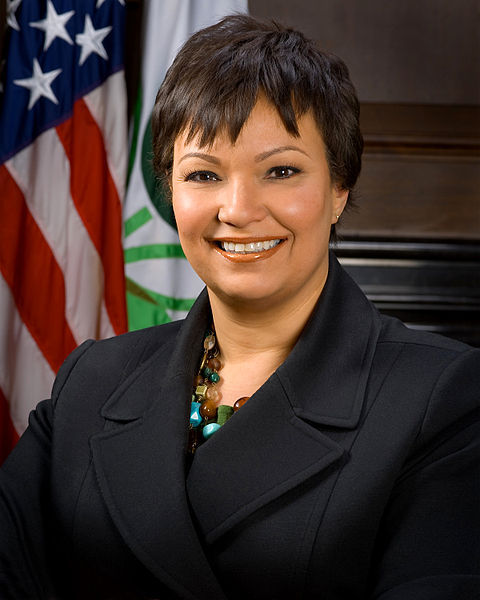
Agency Heads Fight Back, Defend Their Missions
10/26/2011
 Rhetorical and legislative attacks on the agencies that protect the public from health, safety, and environmental hazards occur almost daily, coming from corporate interests and their political allies on Capitol Hill. Now, some agency heads appear to be publicly fighting back by openly defending the work their agencies do to protect the American people.
Rhetorical and legislative attacks on the agencies that protect the public from health, safety, and environmental hazards occur almost daily, coming from corporate interests and their political allies on Capitol Hill. Now, some agency heads appear to be publicly fighting back by openly defending the work their agencies do to protect the American people.
The traditional way that agency heads defend their agencies is in oversight hearings conducted by the House and Senate. Obama administration officials have testified often throughout 2011, especially before many Republican-controlled House committees and subcommittees. For example, on Oct. 5, Dr. David Michaels, Assistant Secretary, Occupational Safety and Health Administration (OSHA), testified before the House Subcommittee on Workforce Protections, the third time Michaels has testified before the House this year.
Michaels highlighted the benefits of the Occupational Safety and Health Act, passed in 1971, to both workers and businesses. "It is difficult to believe that only 40 years ago most American workers did not enjoy the basic human right to work in a safe workplace. Instead, they were told they had a choice: They could continue to work under dangerous conditions, risking their lives, or they could move on to another job," he noted in his written testimony.
He cited the decline in deaths and injuries per day (from an estimated 38 deaths per day on the job in 1971 to 12 today; illnesses and injuries have declined "from 10.9 per 100 workers per year in 1972 to less than 4 per 100 workers in 2009"), which is the result of enforcement of critical OSHA rules that regulate grain and cotton dust, limit exposure to toxics like asbestos and benzene, and protect health care workers from blood-borne pathogens through a reduction in needle sticks.
Michaels noted that deaths and injuries take their toll on businesses as well the workers and their families who suffer from lost wages. Michaels cited a 2010 report showing that "the most disabling injuries (those involving six or more days away from work) cost American employers more than $53 billion a year – over $1 billion a week – in workers' compensation costs alone."
Since she was appointed, U.S. Environmental Protection Agency (EPA) Administrator Lisa Jackson, also a regular at congressional hearings, has taken a more public stance defending her agency than many other agency heads. In an Oct. 12 guest piece in Time magazine, Jackson fought back against congressional broadsides on the agency and important environmental laws, calling the nonstop attacks "misleading information." She noted the significant benefits of strong environmental standards, including fewer asthma attacks, fewer deaths, innovations in business processes, and jobs created. She concluded, "The challenges we face as a nation deserve a fact-based discussion, not scare tactics. We shouldn't let a lot of hot air in Washington lead to dirty air in your hometown. Yet that's the direction we're headed if we continue to put politics ahead of our health and environmental protection."
Jackson also joined with Kathleen Sebelius, Secretary of the Department of Health and Human Services (HHS), to write an op-ed in the Oct. 16 edition of USA Today. They discussed the costs of pollution to the health of families and children, especially in minority and at-risk neighborhoods. "In total, our children's exposure to air pollution and toxic chemicals costs America more than $75 billion every year. When our nation is working to pay the bills, we shouldn't be spending $75 billion a year to pay for illnesses we could have prevented."
Sebelius and Jackson noted how their two agencies are working together to improve Americans' health and quality of life. For example, HHS and EPA have combined data "to give local policymakers access to detailed information on environmental factors and health disparities. A local health official can now look at data on air quality and asthma hospitalization at the same time, and use it to identify at-risk communities and improve prevention efforts."
Robert Adler, one of the commissioners of the Consumer Product Safety Commission (CPSC), which regulates approximately 15,000 consumer products ranging from children's toys and cribs to swimming pools and all-terrain vehicles, also went on the offensive in an op-ed in the New York Times on Oct. 16.
"What many of our critics really want to do is to stop government from regulating, period. They are invoking cost-benefit analysis as their weapon of choice…health and safety agencies rarely impose new costs on society when we issue safety regulations. We simply re-allocate who pays the costs," Adler wrote.
CPSC estimates that about 31,000 people die and another 34 million are injured by unsafe consumer products. These deaths and injuries cost society about $200 billion annually. Adler argues that "[a]nyone who insists that regulations necessarily impose new costs on society shouldn’t be taken seriously. The costs are already there, in the form of deaths and injuries – and are often as much of a drag on our economy as any safety rule. So the real issue is who should bear the costs." Regulatory critics, he claims, are not interested in rationality and better rules but only in the costs to businesses. "[B]enefits to consumers somehow never make it to the table," he concludes.
Agency heads like Michaels, Jackson, Sebelius, and Adler have the responsibility to make people's health and safety their top priorities. It is encouraging to see them stepping up to defend the benefits our system of standards and safeguards delivers. Educating the public about what they do should be a critical part of their work – especially now when there is an orchestrated attack on our regulatory system. We hope they’ll continue to make their case to the public.


